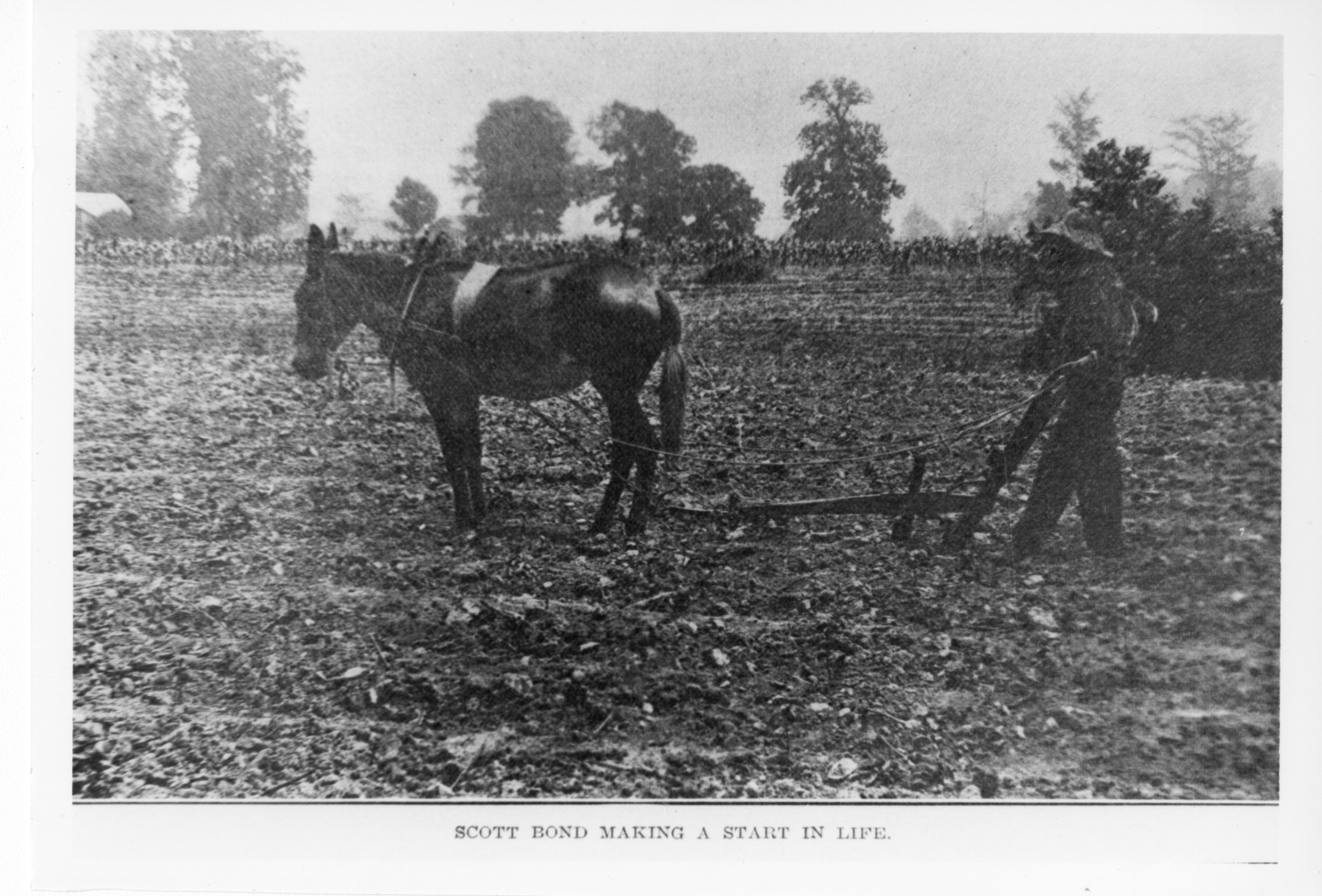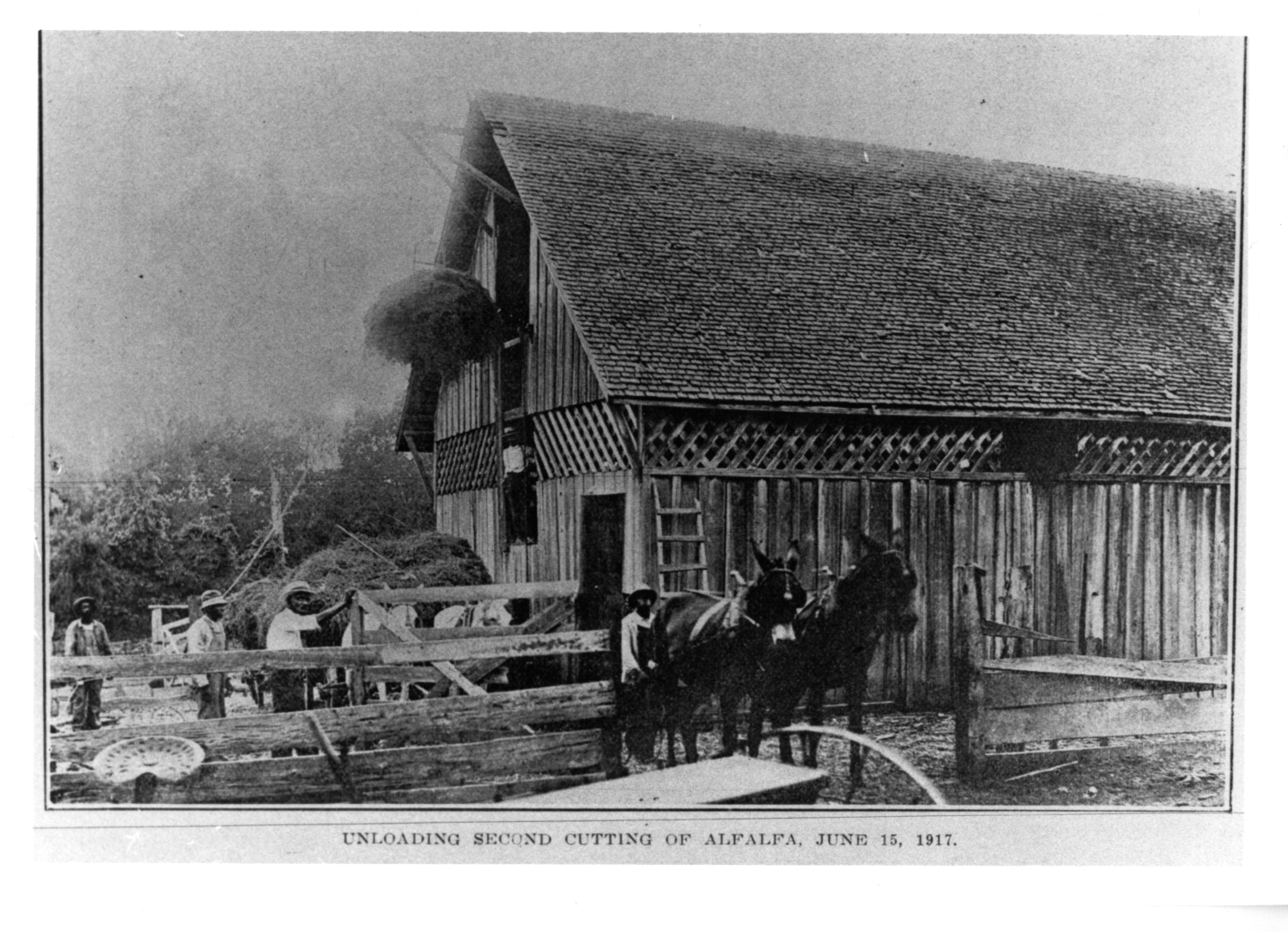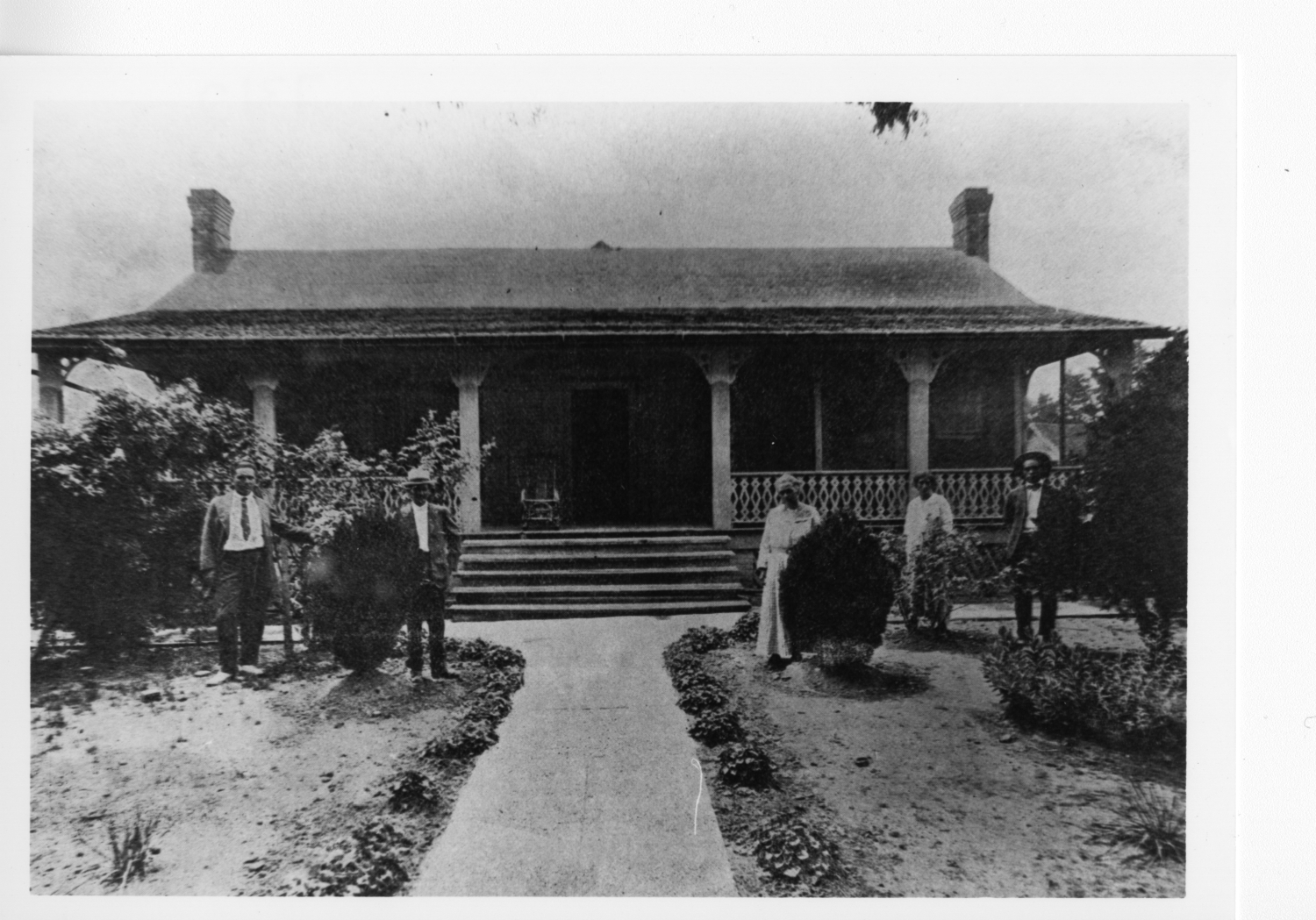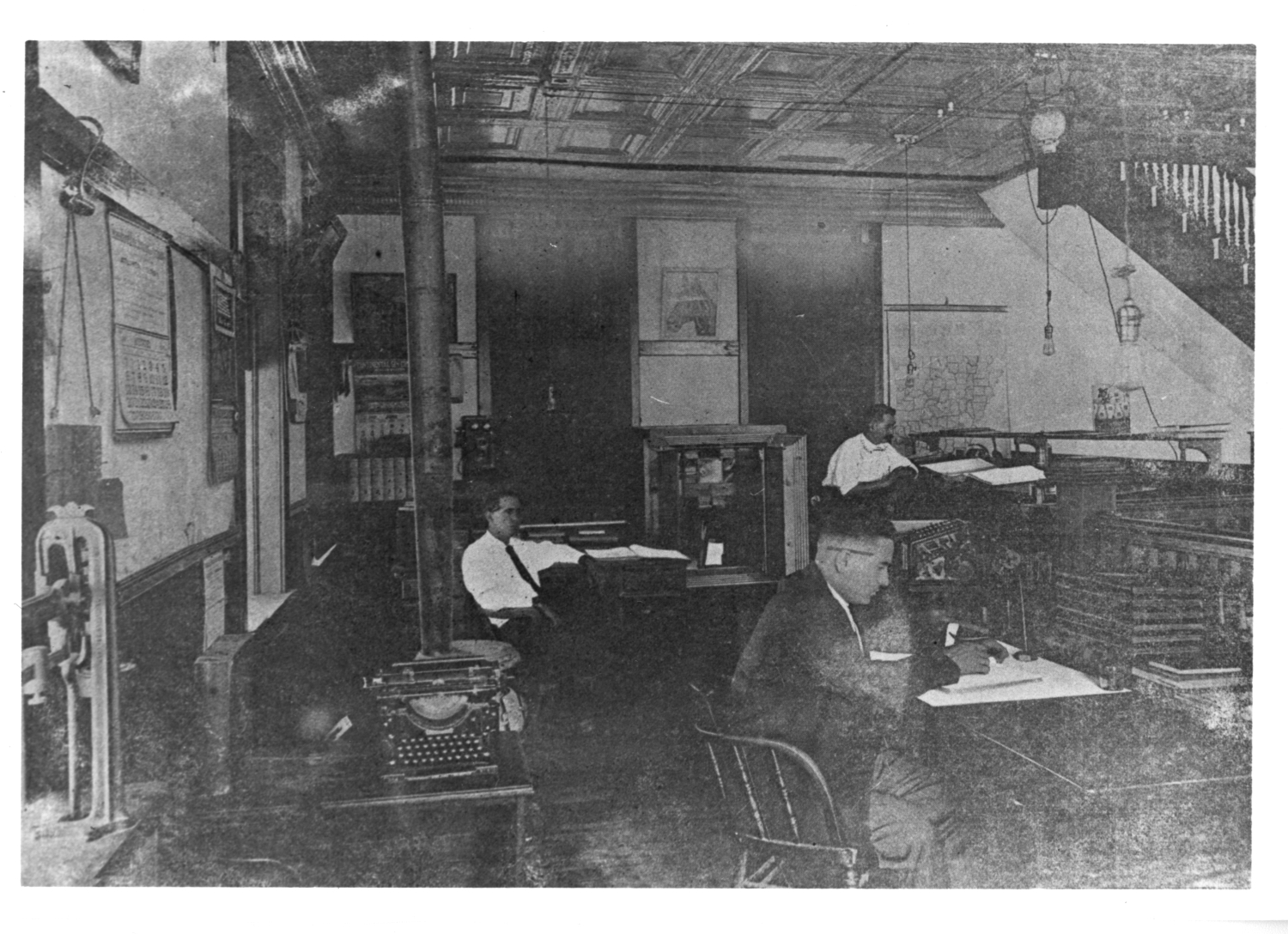Big Farms in the Early 20th Century
Introduction
Before the mid-20th century (1900s), most farms around the world practiced subsistence farming. This means that they were small and run by a rural family, all members of which, including children, did labor necessary to maintain a farm. The subsistence farming families produced enough crops and took care of enough animals (cows, pigs, chickens, horses, etc.) to feed themselves. Very little or nothing was produced for sale or trade. Bigger farms, where owners’ families worked but also hired additional farmworkers, were a minority of farms. Those produced enough to feed the farming families and to sell. They also often produced enough profit to introduce machines and other technology that made farming more efficient. Even more rare were large estates and plantations that produced crops or livestock for sale at the national and international markets. Those were owned by very wealthy individuals, who did not do agricultural work themselves but either hired workers for wages or owned individuals, who worked at their estates as forced labor (for example, slaves at pre-Civil War cotton or tobacco plantations in the American South).
In this activity, you will explore ten historical photos from a big farm owned by Scott Bond in Arkansas. These photos illustrate life and labor on a big farm in the early 20th century (1900s). Bond was an African American farmer and businessman, who was born enslaved in Mississippi in 1852 and later moved to Arkansas, where he established a long thriving career. His success was notable for two reasons. First, most farms in Arkansas in the early 20th century were small subsistence farms. Few Arkansas farmers were able to accumulate a lot of land. By the time Bond died in 1933, he owned 12,000 acres of land and operated several businesses, including multiple cotton gins, a sawmill, and a store. Second, although many African Americans were highly skilled farmers and agricultural workers, most were not able to buy land. Banks refused to give loans to black farmers and business owners. Even if a black farmer had enough money to buy land, white landowners refused to sell land to African Americans. These practices forced most black farmers to rent land.
Activity Questions
Workers at Scott Bond's farm unloading alfalfa
- Examine Photos 1, 2, and 3. What do these photos tell us about who worked on Bond’s farm? Who are the workers? How many workers were needed to do the farm work? What kind of work did they do?
- How do the workers in the photos do their work? Do they use any special tools? Do they use any advanced technology (machines)?
- Note that Photo 3 shows Scott Bond working in the field, while Photos 1 and 2 show that he was also hiring many farmworkers. Why do you think Bond worked in the field himself when he could afford to hire many workers?
Scott Bond's gin with cotton ready for shipping
- Examine Photos 4, 5, and 6. These photos remind us that farming means much more than cultivating crops in the field or tending to livestock (farm animals). What aspects of farm life do these photos document?
- Based on Photos 4, 5, and 6, what services did Bond’s farm offer? Note the original caption by Photo 4 (in the photo). Did Bond’s cotton gin process cotton that was produced only on Bond’s farm?
- What do these photos tell us about Bond’s role and position in the local farming community?
The Cedars, Scott Bond's home in Madison
- Examine Photos 7, 8, and 9. What do they tell us about the Bond family and their economic status?
- Note that Photo 8 documents a garden by the Bond family’s house. Such gardens, where families cultivated small amounts of various vegetables and fruit, were very common on farms of all sizes. Why do you think farming families tended to small gardens, even when they owned big farms that produced plenty of crops?
- Read Bond’s short biography here https://encyclopediaofarkansas.net/entries/scott-winfield-bond-1594/. What businesses, in addition to a large farm, did Bond own?
- Examine Photo 10. What does this photo tell us about Bond’s businesses? Why do you think Bond had to have an office with several workers?
- What do all the ten photos in this activity tell us about big farms in the early 20th century (1900s)? How was work done on those farms? Who did the work? What type of work was required to maintain a big farm? Was a big farm a good business?
- Do you think that it was easy or difficult for a farmer like Bond to achieve success in the Jim Crow-era South?
- Research the experience of black farmers in the South in the early 20th century. Was Bond a typical or an exceptional black farmer of his era?
Primary Sources
To learn more about the primary sources featured in the activities above, click the following links:
Arkansas Social Studies Standards
Arkansas History, Grades 7 – 8
- Strand: Geography
- Content Standard 2: Students will analyze ways the geography of Arkansas influenced the development of the state
- G.2.AH.7-8.2 Analyze relationships between the geography of Arkansas and economic development over time (e.g., tourism, agriculture)
- Strand: History
- Content Standard 7: Students will examine the impact of historical events and people on the development of Arkansas
- H.7.AH.7-8.1: Evaluate ways that historical events in Arkansas were shaped by circumstances in time and place
- H.7.AH.7-8.9 Examine social and cultural transformations in Arkansas
- Strand: Economics
- Content Standard 3: Students will analyze economic influences on Arkansas.
- E.3.AH.7-8.4 Examine contributions of Arkansas entrepreneurs on economic development in Arkansas
Arkansas History, Grades 9 – 12
- Strand: Era 4: Early 20th Century 1901-1940
- Content Standard 4: Students will analyze factors that influenced the perspectives of Arkansans in the early 20th century.
- Era4.4.AH.9-12.2 Analyze economic developments in Arkansas during the early 20th century
African American History, Grades 9 – 12
- Strand: Hardening of Jim Crow 1877-1920
- Content Standard 4: Students will analyze the African American experience in the post-Reconstruction Era.
- HJC.4.AAH.1 Research divergent paths and challenges faced by African American men and women from post-Reconstruction to the early 20th century
- HJC.4.AAH.2 Analyze various experiences of African American men and women during the Jim Crow time period from a variety of perspectives using primary and secondary sources
Key Terms
More Information
Downloadable Guides and Handouts
We encourage K-12 educators to use History Alive: Virtually! in a way that will best match their classroom needs. The “Exercise” handout includes a complete exercise as featured on this website, the “Primary Sources” handout includes only primary sources used in the exercise, and the “Questions” handout includes analytical questions from the exercise but is editable and can be easily changed to best match students’ needs.
Big Farms in the Early 20th Century – Exercises





